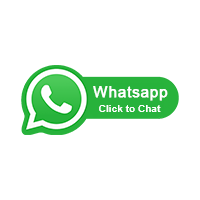-

- Sopto Home
-

- Special Topic
-

- PCI-E Card Knowledge
-

- Key Differences in the PCI Express 3.0 Standard
PCI-E Card Knowledge
- Info about Network Interface Card Teaming
- How to Setup a Server with Multiple Network Interface Adapters?
- How to Reconnect an Internet Network Adapter for an Acer Aspire?
- 9 Things to Do When Your Internal Network Card Stops Working
- Ethernet Standards NIC for Home Networking
- What Is a Network Interface Adapter?
- How to Configure a Network Interface Card in Linux?
- How should Configure Your NIC for ISA and TMG?
- Recommended Network Card Configuration for Forefront UAG Servers
SOPTO Special Topic
Certificate



Guarantee
Except products belongs to Bargain Shop section, all products are warranted by SOPTO only to purchasers for resale or for use in business or original equipment manufacturer, against defects in workmanship or materials under normal use (consumables, normal tear and wear excluded) for one year after date of purchase from SOPTO, unless otherwise stated...
Return Policies
Defective products will be accepted for exchange, at our discretion, within 14 days from receipt. Buyer might be requested to return the defective products to SOPTO for verification or authorized service location, as SOPTO designated, shipping costs prepaid. .....
Applications

PCI-E NIC Cards provide redundant connectivity to ensure an uninterrupted network connection.
PCI-E NIC Cards are ideal for VM environments with multiple operating systems, requiring shared or dedicated NICs.
They are specially designed for desktop PC clients, servers, and workstations with few PCI Express slots available.
SOPTO Products
- Fiber Optic Transceiver Module
- High Speed Cable
- Fiber Optical Cable
- Fiber Optical Patch Cords
- Splitter CWDM DWDM
- PON Solution
- FTTH Box ODF Closure
- PCI-E Network Card
- Network Cables
- Fiber Optical Adapter
- Fiber Optical Attenuator
- Fiber Media Converter
- PDH Multiplexers
- Protocol Converter
- Digital Video Multiplexer
- Fiber Optical Tools
- Compatible
Related Products
Performance Feature
PCI-E Card Knowledge
Recommended


Key Differences in the PCI Express 3.0 Standard
A bit of historical perspective is in order. The Peripheral Component Interconnect Special Interest Group (PCI-SIG) approved the now-familiar PCIe 2.0 specification in January 2007. Chipsets and system boards for version 2.0 started appearing in late 2007. Along with improvements to the protocol and drivers, the 2.0 iteration boosted the data transfer speed to 5 gigatransfers per second (GT/s) and increased the data rate per PCIe channel (or lane) to 500 MB per second, allowing a top-end, 32-lane PCIe device to support data rates of up to 16 GB per second (GBps).
.jpg)
Gigabit PF Single Port Server Adapter
The specification for PCIe 3.0, which appeared in November of 2010, improved numerous electrical characteristics for timing and signaling -- critical issues considering the physical limitations of copper interconnections. The 3.0 specification also increased the data transfer speed to 8 GT/s. When implemented with improvements to the data encoding scheme, PCIe 3.0 basically doubles the PCIe 2.0 bandwidth to about 32GBps. Systems and devices designed for PCIe 3.0 from AMD, Intel and other manufacturers started appearing in January 2012.
Today, PCIe 3.0 is generally available on server motherboards and peripheral devices, but has not yet seen broad deployment across the data center because technology refresh cycles may not have upgraded PCIe 2.0 systems.
The benefit of PCIe 3.0 is primarily its high data transfer bandwidth. Peripheral devices that demand high-speed data transfers can potentially see dramatic performance improvements using the PCIe 3.0 interface. For example, RAID storage controllers, network interface controllers and especially high-performance graphics adapters/mathematics engines will benefit from a move to PCIe 3.0.
For more info, please pay attention to us.




